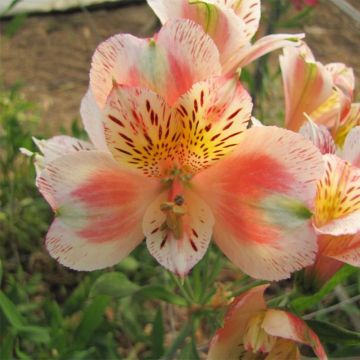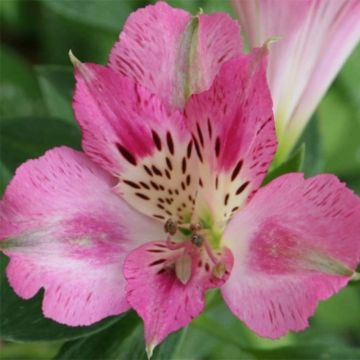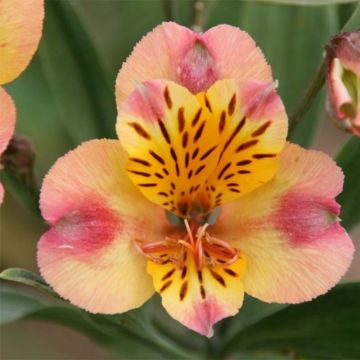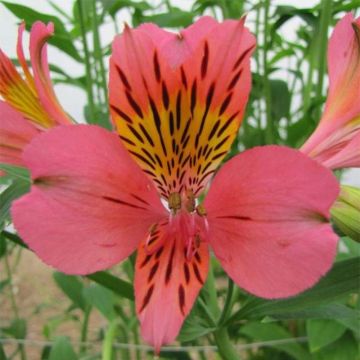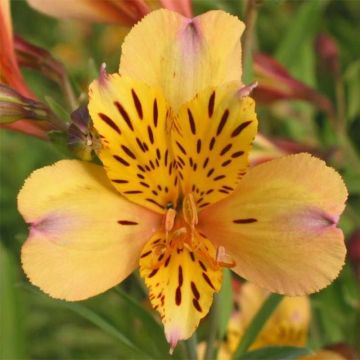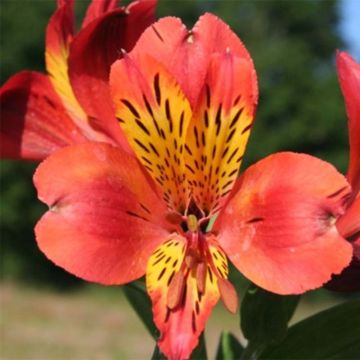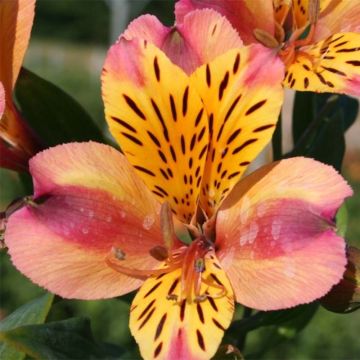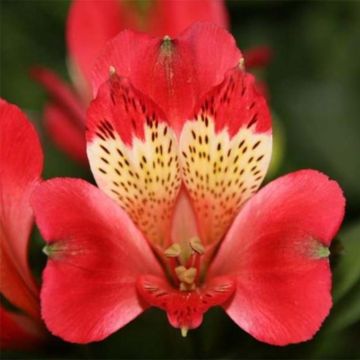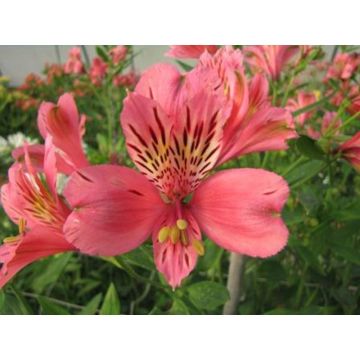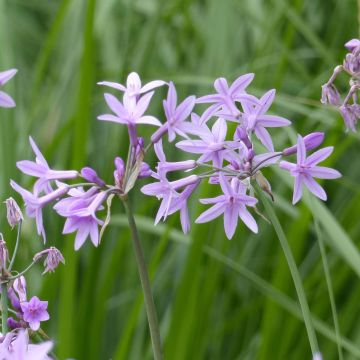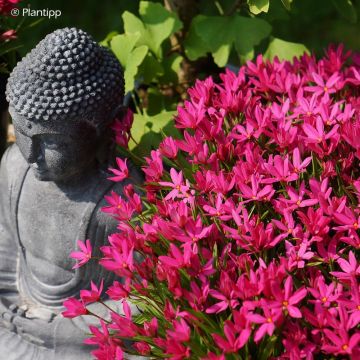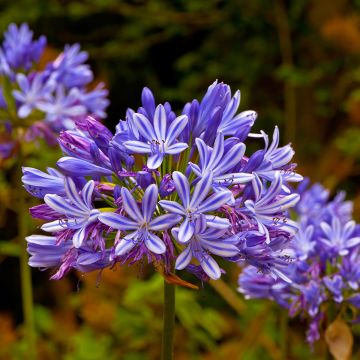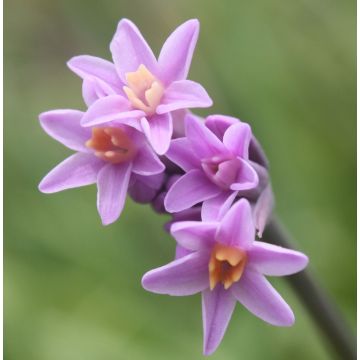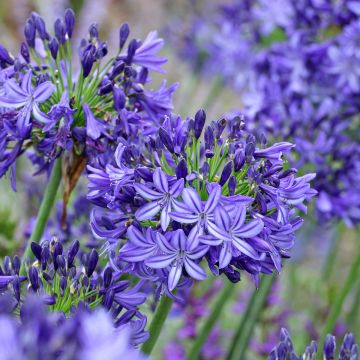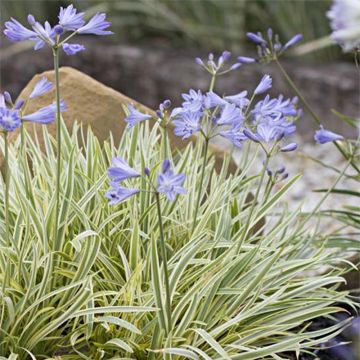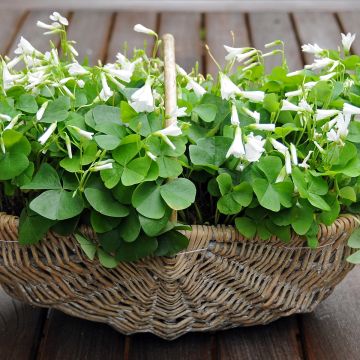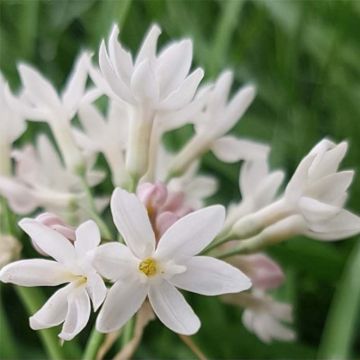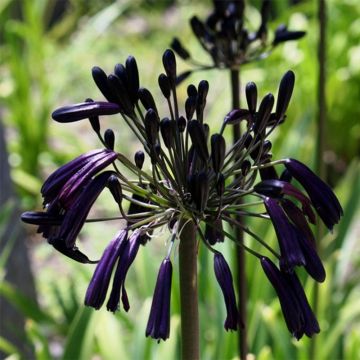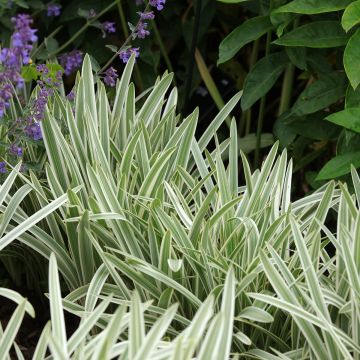Shipping country and language
Your country of residence may be:
Your country of residence is:
For a better user experience on our website, you can select:
Your shipping country:
Andorra
Austria
Belgium
Bulgaria
Canada
Chile
Croatia
Cyprus
Czechia
Denmark
Estonia
Finland
France
Germany
Greece
Hungary
Iceland
Ireland
Italy
Latvia
Lithuania
Luxembourg
Malta
Monaco
Netherlands
Poland
Portugal
Romania
Slovakia
Slovenia
Spain
Sweden
Switzerland
United Kingdom
We only deliver seed and bulb products to your country. If you add other products to your basket, they cannot be shipped.
Language:
French
German
Spanish
English
My Account
Hello
My wish lists
Plantfit
Log in / Register
Existing customer?
New customer?
Create an account to track your orders, access our customer service and, if you wish, make the most of our upcoming offers.
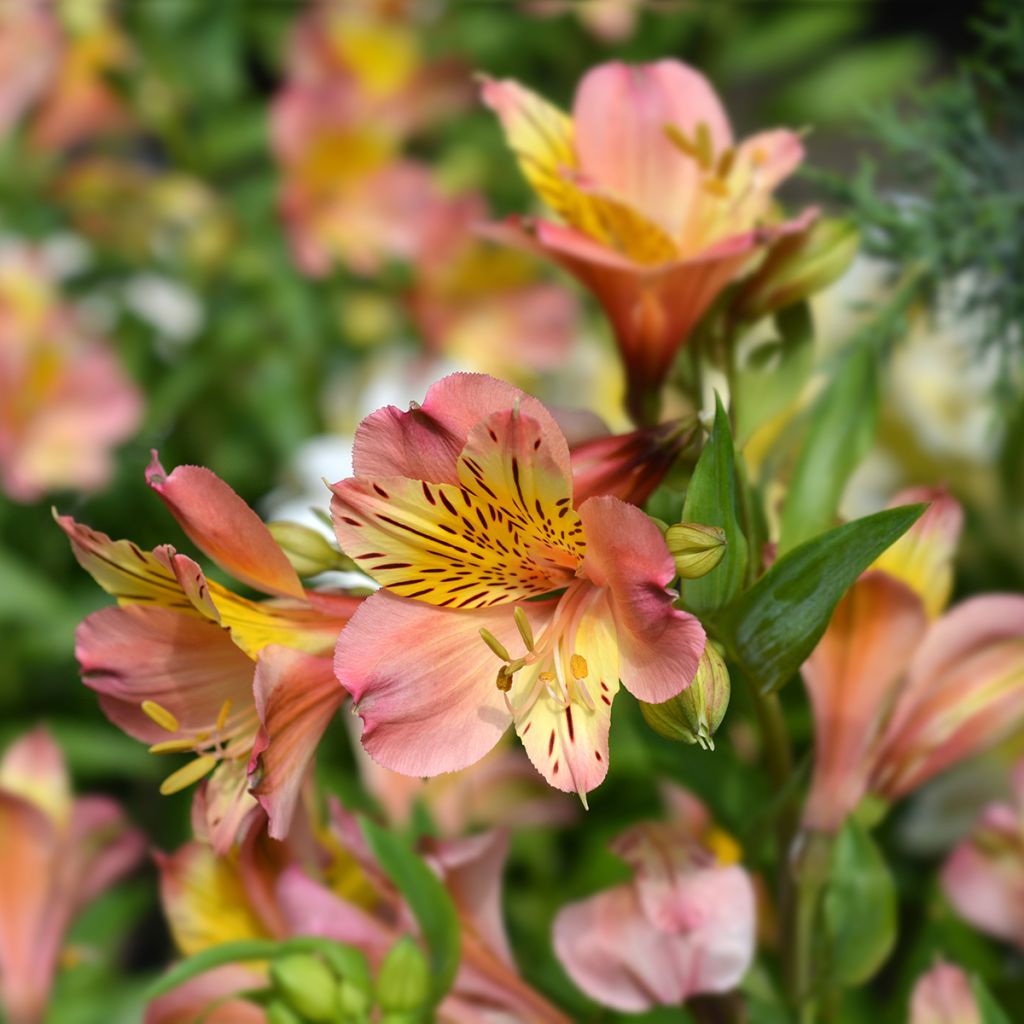

Alstroemeria Majestic Henri - Peruvian Lily
Alstroemeria Majestic Henri - Peruvian Lily
Alstroemeria Majestic Henri
Peruvian Lily, Lily of the Incas
Order in the next for dispatch today!
Dispatch by letter from €3.90.
Delivery charge from €5.90 Oversize package delivery charge from €6.90.
More information
This item is not available in your country.
Schedule delivery date,
and select date in basket
This plant carries a 12 months recovery warranty
More information
We guarantee the quality of our plants for a full growing cycle, and will replace at our expense any plant that fails to recover under normal climatic and planting conditions.
From €5.90 for pickup delivery and €6.90 for home delivery
Express home delivery from €8.90.
Does this plant fit my garden?
Set up your Plantfit profile →
Description
Alstroemeria 'Majestic Henri' is a variety that flowers for up to 5 months. This hardy perennial features beautifully contrasting flowers in a lovely soft apricot-pink colour with yellow tepals streaked with dark markings. Its cut flowers last a long time in a vase. it requires rich and well-draining soil, and regular watering during dry spells. Plant it in full sun or partial shade, in a bed sheltered from strong winds that could cause the long stems to bend.
Alstroemerias belong to the Alstroemeriaceae family. They are perennial plants with tuberous roots native to South America. The hardiest varieties, such as A. aurantiaca, are native to the Chilean Andes and Patagonia. They can take a while to establish, and can either disappear or become invasive. Quirky yet fantastic plants, they are very sensitive to growing conditions and are "indestructible" once you find the right spot for them. Breeders have been working for a few years to develop more reliable varieties that can withstand our cold and humid winters. The Majestic series was developed near Angers. It includes tall hybrids that can tolerate short frosts of around -15°C (5°F) if the root is protected from moisture.
Alstroemeria 'Majestic Henri' quickly forms dense clumps from spring onwards, with numerous leafy stems reaching a height of approximately 70cm (8in) when in bloom, with a similar spread. The flowering period lasts from June to October, blooming without interruption if the soil remains moist. Each flower stem carries multiple 5 to 6cm (2in) flowers arranged in terminal umbels. They consist of 3 small golden yellow central petals streaked with brown, surrounded by 3 slightly wider petals in a pink-apricot colour. The foliage is abundant and arranged along the stems, with dark greenish-blue leaves. The foliage and stems die back in winter, leaving only the slightly running stump with fleshy roots underground. This stump is sensitive to transplant shock, especially in older plants.
The strikingly coloured Alstroemeria 'Majestic Henri' stands out in a slightly exotic bed or mixed border, alongside daylilies, coneflowers, and crocosmias. Lighten up the scene with medium-sized grasses such as stipa, small miscanthus, or Muhlenbergia capillaris. Add clumps of Verbena bonariensis 'Buenos Aires'. Its flowers last up to three weeks in a vase if you remember to change the water daily and occasionally trim the stems. In a large flower pot, pair it with blue lobelias or Euphorbia 'Diamond Frost', for example.
Flowering
Foliage
Plant habit
Botanical data
Alstroemeria
Majestic Henri
Alstroemeriaceae
Peruvian Lily, Lily of the Incas
Cultivar or hybrid
Other Alstroemerias
Planting and care
Plant in spring, choosing a sunny or partially shaded location. They like light, well-drained, well-worked, fertile soil that tends to be sandy or loamy and is slightly acidic to neutral. While they appreciate some moisture to support their flowering, they adapt quite well to drier soils in summer, ceasing to bloom and entering a dormant phase. These plants are rather hardy if the soil does not become waterlogged in winter. In colder regions, you can protect the base with a thick mulch of leaves or fern fronds in autumn. Slugs love the young shoots, so be sure to protect the plants.
The plant completely disappears in autumn, so it is wise to mark its location. Avoid using a hoe near the clump as the delicate tubers often wander. Weed by hand, if necessary. The Majestic varieties can withstand temperatures as low as -15°C (5°F) in very well-drained soil, under a protective mulch.
Planting period
Intended location
Care
This item has not been reviewed yet - be the first to leave a review about it.
Bulbs to grow in pots
Haven't found what you were looking for?
Hardiness is the lowest winter temperature a plant can endure without suffering serious damage or even dying. However, hardiness is affected by location (a sheltered area, such as a patio), protection (winter cover) and soil type (hardiness is improved by well-drained soil).

Photo Sharing Terms & Conditions
In order to encourage gardeners to interact and share their experiences, Promesse de fleurs offers various media enabling content to be uploaded onto its Site - in particular via the ‘Photo sharing’ module.
The User agrees to refrain from:
- Posting any content that is illegal, prejudicial, insulting, racist, inciteful to hatred, revisionist, contrary to public decency, that infringes on privacy or on the privacy rights of third parties, in particular the publicity rights of persons and goods, intellectual property rights, or the right to privacy.
- Submitting content on behalf of a third party;
- Impersonate the identity of a third party and/or publish any personal information about a third party;
In general, the User undertakes to refrain from any unethical behaviour.
All Content (in particular text, comments, files, images, photos, videos, creative works, etc.), which may be subject to property or intellectual property rights, image or other private rights, shall remain the property of the User, subject to the limited rights granted by the terms of the licence granted by Promesse de fleurs as stated below. Users are at liberty to publish or not to publish such Content on the Site, notably via the ‘Photo Sharing’ facility, and accept that this Content shall be made public and freely accessible, notably on the Internet.
Users further acknowledge, undertake to have ,and guarantee that they hold all necessary rights and permissions to publish such material on the Site, in particular with regard to the legislation in force pertaining to any privacy, property, intellectual property, image, or contractual rights, or rights of any other nature. By publishing such Content on the Site, Users acknowledge accepting full liability as publishers of the Content within the meaning of the law, and grant Promesse de fleurs, free of charge, an inclusive, worldwide licence for the said Content for the entire duration of its publication, including all reproduction, representation, up/downloading, displaying, performing, transmission, and storage rights.
Users also grant permission for their name to be linked to the Content and accept that this link may not always be made available.
By engaging in posting material, Users consent to their Content becoming automatically accessible on the Internet, in particular on other sites and/or blogs and/or web pages of the Promesse de fleurs site, including in particular social pages and the Promesse de fleurs catalogue.
Users may secure the removal of entrusted content free of charge by issuing a simple request via our contact form.
The flowering period indicated on our website applies to countries and regions located in USDA zone 8 (France, the United Kingdom, Ireland, the Netherlands, etc.)
It will vary according to where you live:
- In zones 9 to 10 (Italy, Spain, Greece, etc.), flowering will occur about 2 to 4 weeks earlier.
- In zones 6 to 7 (Germany, Poland, Slovenia, and lower mountainous regions), flowering will be delayed by 2 to 3 weeks.
- In zone 5 (Central Europe, Scandinavia), blooming will be delayed by 3 to 5 weeks.
In temperate climates, pruning of spring-flowering shrubs (forsythia, spireas, etc.) should be done just after flowering.
Pruning of summer-flowering shrubs (Indian Lilac, Perovskia, etc.) can be done in winter or spring.
In cold regions as well as with frost-sensitive plants, avoid pruning too early when severe frosts may still occur.
The planting period indicated on our website applies to countries and regions located in USDA zone 8 (France, United Kingdom, Ireland, Netherlands).
It will vary according to where you live:
- In Mediterranean zones (Marseille, Madrid, Milan, etc.), autumn and winter are the best planting periods.
- In continental zones (Strasbourg, Munich, Vienna, etc.), delay planting by 2 to 3 weeks in spring and bring it forward by 2 to 4 weeks in autumn.
- In mountainous regions (the Alps, Pyrenees, Carpathians, etc.), it is best to plant in late spring (May-June) or late summer (August-September).
The harvesting period indicated on our website applies to countries and regions in USDA zone 8 (France, England, Ireland, the Netherlands).
In colder areas (Scandinavia, Poland, Austria...) fruit and vegetable harvests are likely to be delayed by 3-4 weeks.
In warmer areas (Italy, Spain, Greece, etc.), harvesting will probably take place earlier, depending on weather conditions.
The sowing periods indicated on our website apply to countries and regions within USDA Zone 8 (France, UK, Ireland, Netherlands).
In colder areas (Scandinavia, Poland, Austria...), delay any outdoor sowing by 3-4 weeks, or sow under glass.
In warmer climes (Italy, Spain, Greece, etc.), bring outdoor sowing forward by a few weeks.
